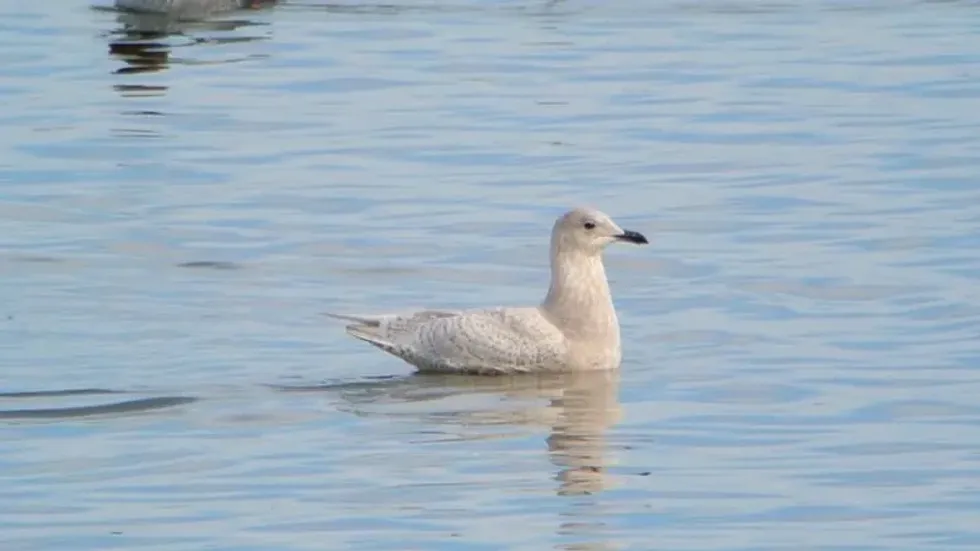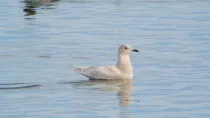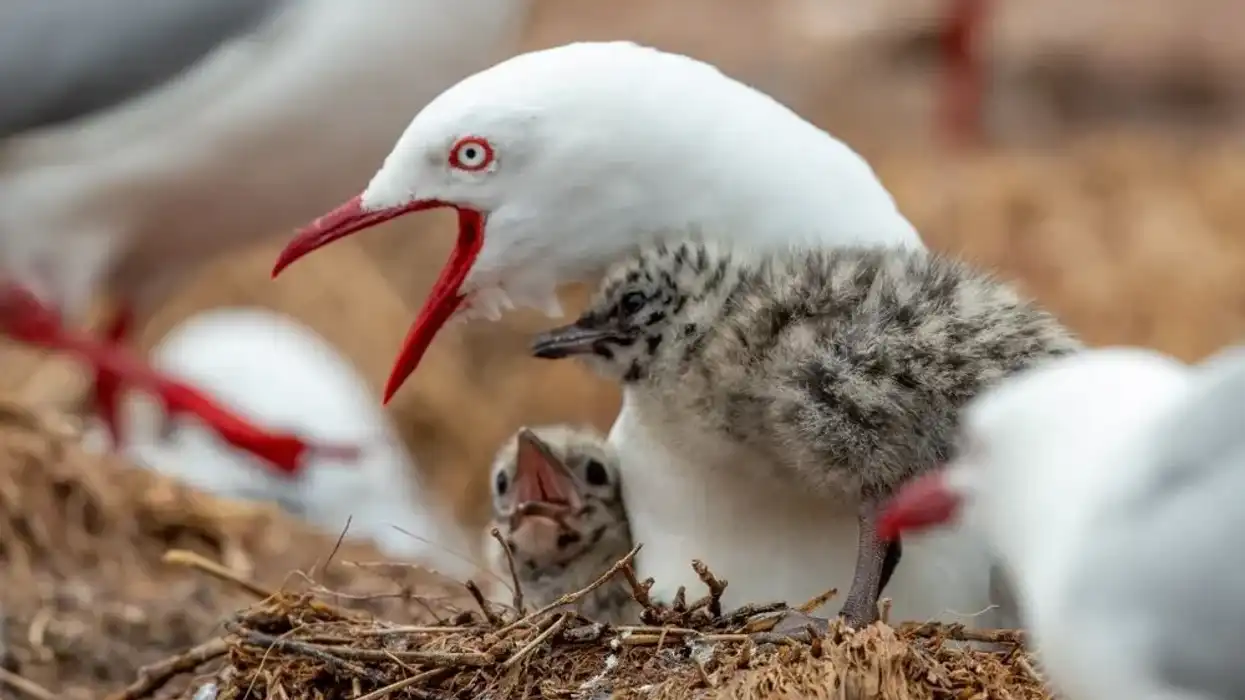One of the most interesting birds who live near the water has to be the Iceland Seagulls!
These wonderful birds usually live in the Arctic, but this bird is more well known for its unique wingtips that enable it to travel far distances even against harsh, humid winds. With a relatively unremarkable plumage, you might not put much stock in this creature with unique wings, but do not be too quick to dismiss it!
This bird has immense stamina to travel hundreds of miles every year just for their migration cycle and remembers migration routes long after they start traveling.
Even though these birds do not require immediate conservation, the threat of global warming looms large on these birds of North America, which hampers not just their migration and breeding cycle but also affects their lifestyle and life span adversely. Do you want to know more about this species?
Then read on, and do not forget to check out other unique species like the Ovenbird and Eastern Kingbird.
Iceland Gull Interesting Facts
What type of animal is an Iceland Gull?
The Iceland Gull (Larus glaucoides) is a type of bird.
What class of animal does an Iceland Gull belong to?
The Iceland Gull, a bird of North America, belongs to the class of birds.
How many Iceland Gulls are there in the world?
Since Iceland Gulls reproduce in the far north region, data on population in the world patterns are scarce. According to Partners in Flight, the worldwide breeding population of this bird is estimated to be about 220,000 adult birds in the world.
Where does an Iceland Gull live?
The Iceland Gull species live on the ocean in areas like the Arctic Region and Greenland.
Iceland What is an Iceland Gull's habitat?
Gulls, commonly known as seagulls, can be found on beaches, in coastal cities, and low-lying coastal areas. Their habitats can be inland, near garbage dumps, sewage outlets, and parking lots. Gulls are pleased in the habitats like inland and along the coastal regions as long as there is food nearby.
Who do Iceland Gulls live with?
Iceland Gulls are social birds, and once roof breeding takes hold, other seagulls will begin to flock to the area and build nests on neighboring structures until a colony is formed.
How long does an Iceland Gull live?
The life span of the Glaucous Gull is about 20 years. The Herring Gull bird species live for up to 30 years and more than that in suitable conditions.
How do they reproduce?
Its breeding range is mostly in the Arctic and the winter place is in British Columbia and New York. On cliffs and coasts, this species breeds either single or in colonies (groups). Adult Iceland gulls build a nest out of moss, grass, or seaweed on the cliff ledges or plain ground surface.
Two to three light brown colored eggs are laid by adults in the nest. In Greenland and Canada, they breed too. These birds don't have a preference for Iceland.
What is their conservation status?
The IUCN Red List declares the Iceland Gull (Larus glaucoides) as a Least Concern bird species of Canada and Greenland.
Iceland Gull Fun Facts
What do Iceland Gulls look like?
The adult has a small yellow bill, yellow-green legs, light gray upperparts, and dark eyes. In the winter, whenever the head is striped gray, the color of the legs and bill becomes duller.
The bill is dark and short in color, with a pale pinkish surface. The color of the wingtips of this bird varies greatly, with the color of the wingtips varying from white to dark gray.
How cute are they?
The bird, which breeds in New York, wintering in North America, has fabulous wingtips, and attractive plumage, and the spectacular way they forage on water surfaces makes them look cute.
How do they communicate?
The call of Iceland Gull, a bird of North America is similar to that of a Herring Gull, but it is highly pitched. Each separate species of gull has its sound language, which they use to communicate things like mating rituals of couples, alarm calls, and sources of food areas.
The high-pitched whining voices of young gulls, combined with their behavior, allow families to keep repeating meals for them. The majority of alarm sounds are growling in nature.
How big is an Iceland Gull?
The length of Thayer's Gull reaches up to 22-25 in 20-25 in (55.8-63.5 cm), while the adult Iceland Gull measures 19.7-23.6 in (50-60 cm) in length. Herring gulls are 24–26 in length. The Iceland Gull is a medium-sized gull and is smaller than other species of Gulls.
How fast can an Iceland Gull fly?
Without raising higher than 15% of its metabolic rate, an Adult Iceland gull bird whose most effective loiter airspeed was 22 mph could travel at any speed within 15-28 mph (24-45 kph).
How much does an Iceland Gull weigh?
Separate species of Gulls have different weights. The weight of an adult male Herring Gull is 37.03–53.79 oz (1.05-152 kg), while the female Herring Gull weighs 25.04–38.8 oz (0.7-1.07 kg). The weight of an adult Iceland Gull is 28.9-38.8 oz. Thayer's Gull is a subspecies of the Iceland Gull. The approximate weight of a Thayer's Gull is 33.5 oz.
What are the male and female names of the species?
There is not any specific name for the adult Iceland Gull male and female species.
What would you call a baby Iceland Gull?
A baby Iceland Gull doesn't have any particular name.
What do they eat?
These birds mainly eat a variety of small fish. Other than fish, mollusks, carrion, seeds of water plants and fruit are its favorite foods. Around small seabird colonies, it may take young or eggs, and it sometimes forages dead young birds too.
Adult Iceland birds can also eat while swimming or walking. Sometimes adults forage while traveling, collecting their food a little below the surface of the water. Their special scavenging habits take them to sewage sources, garbage dumps, and fish-cleaning facilities regularly.
Are they poisonous?
These Arctic birds are not poisonous.
Would they make a good pet?
These birds are not aggressive species unless they are harmed by others. These species do whatever they have to do for surviving. It is not suggested to keep them as a pet due to their nature and habitat.
Did you know...
The Iceland Gull bird has subspecies named Kumlien's Gull. It migrates from Labrador to New England and west through the Great Lakes for the winter season.
The identification of Iceland gull (family Laridae) species is a medium-sized gull that is slightly larger than its subspecies, Thayer's Gull, in size. It has a dove-like appearance with a round-shaped head and a relatively small beak. These birds have dark pale adult plumage and white wingtips, and it is often referred to as 'white-winged gull.'
The California Gull has two different subspecies. The first California Gull subspecies breeds in the Great Basin zone while other breeds in Great Plains.
The California Gull forms their nest on gravel islands and cliffs. A young California Gull has wingtips with a darker color than an adult and the color of the bill is pink with a dark black dot.
Do Iceland Gulls migrate?
Separate species of Gulls have different migration patterns. Mostly Iceland gulls, native to Greenland, are partial migrants.
Some Iceland Gulls spend the whole year in the Arctic regions, while others migrate south to the winter season in Iceland, the United Kingdom, and the northeast and west coasts of the United States and Canada. Herring Gulls are migratory birds that travel short to medium distances.
These adults, which breed inland in Alaska and Canada prefer warmer winters, while the Herring Gull birds that already breed all along the coasts of Alaska, New England, and the Great Lakes, stay put or migrate out from the sea.
The majority of adult Thayer's Gull breed in the Canadian Arctic and migrate to the Pacific coasts in winter. In late March, adults start leaving for their Arctic places of breeding range, and by May, the majority of them have left our region.
What is the difference between a gull and a seagull?
A seagull is a seabird of the family Laridae with lengthy pointed wings and small legs, while a gull is a seabird of the family Laridae or the genus Larus. It is the wingtips that make the most difference in recognizing them.
Seagulls have finer wingtips to facilitate flying, whereas gulls do not need that degree of finesse in their wingtips to navigate flying.
Here at Kidadl, we have carefully created lots of interesting family-friendly animal facts for everyone to discover! Learn more about some other birds from our Blackburnian Warbler interesting facts and Blue Jay fun facts pages.
You can even occupy yourself at home by coloring in one of our free printable Iceland Gull coloring pages.










